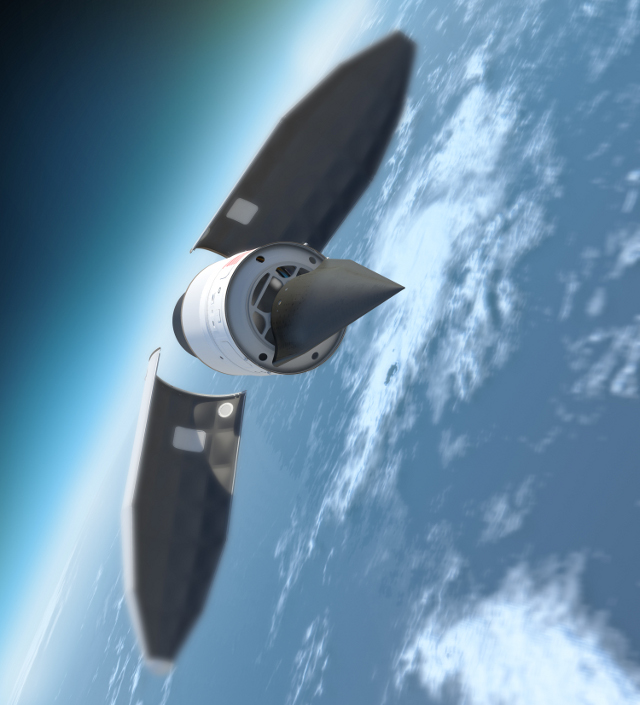Hypersonic Glider Test Fails
Controllers Quickly Lose Contact After Separation from Rocket
Though this morning’s rocket launch from Vandenberg Air Force Base went off without a hitch, the Minotaur IV’s payload didn’t perform as well. An experimental glider capable of slicing through the atmosphere at 13,000 miles per hour — called the Falcon Hypersonic Technology Vehicle 2 — was supposed to separate from the rocket and fly 4,000 miles to the Marshall Islands.

Instead, it petered out soon after being released at around 7:55 a.m., nosediving into the Pacific Ocean and drowning the $120 million mission. The U.S. Defense Advanced Research Projects Agency, which funded and ran the experiment, announced via Twitter that “downrange assets did not reacquire tracking or telemetry. [The Falcon] has an autonomous flight termination capability.”
The disappointing flight is another roadblock for aerospace engineers who’ve struggled for years to develop a vehicle with hypersonic capabilities. When it’s working right, the Falcon can reach Mach 20 and, hypothetically, deliver a military strike anywhere in the world within an hour. The last test occurred in April 2010. That flight lasted around nine minutes before controllers lost contact.


